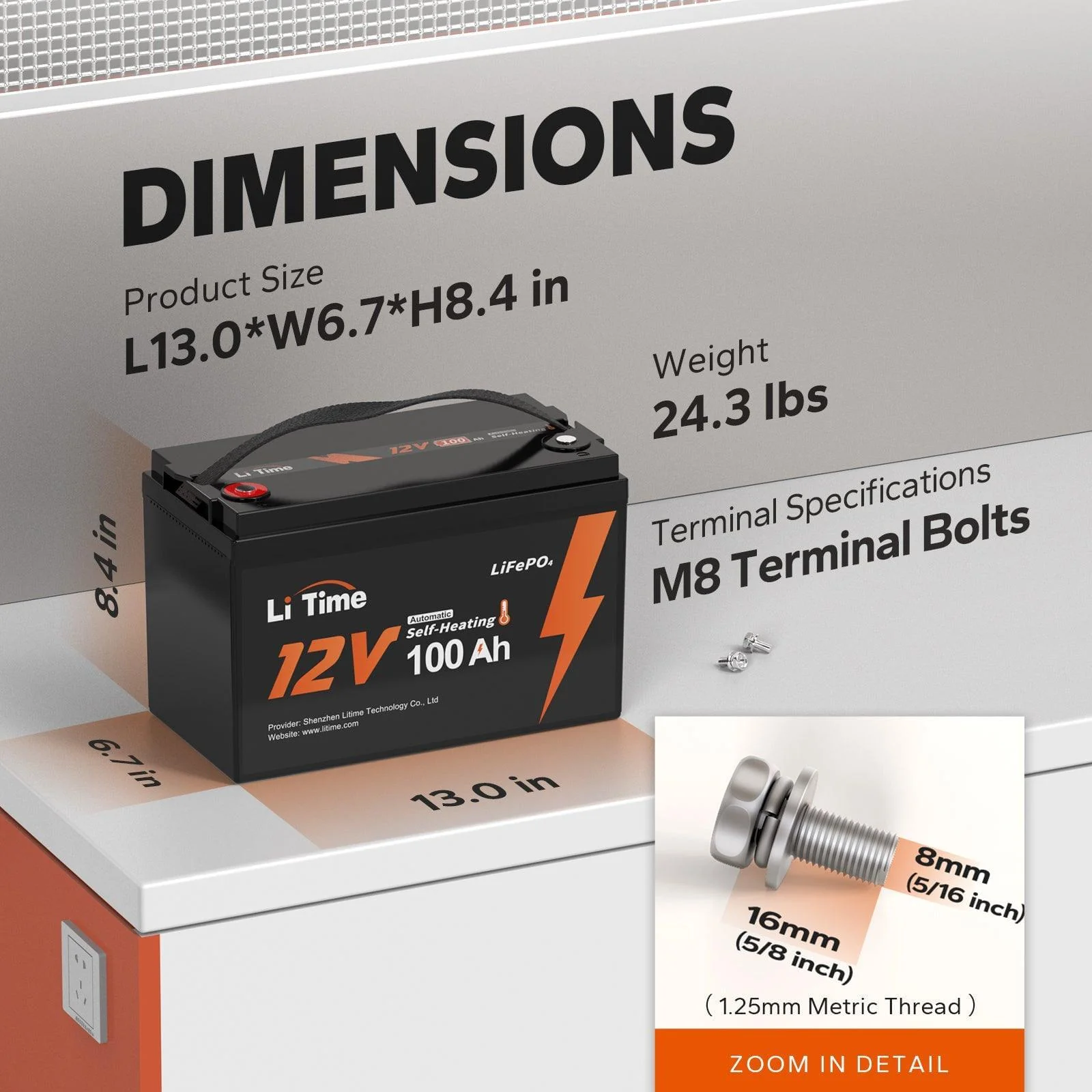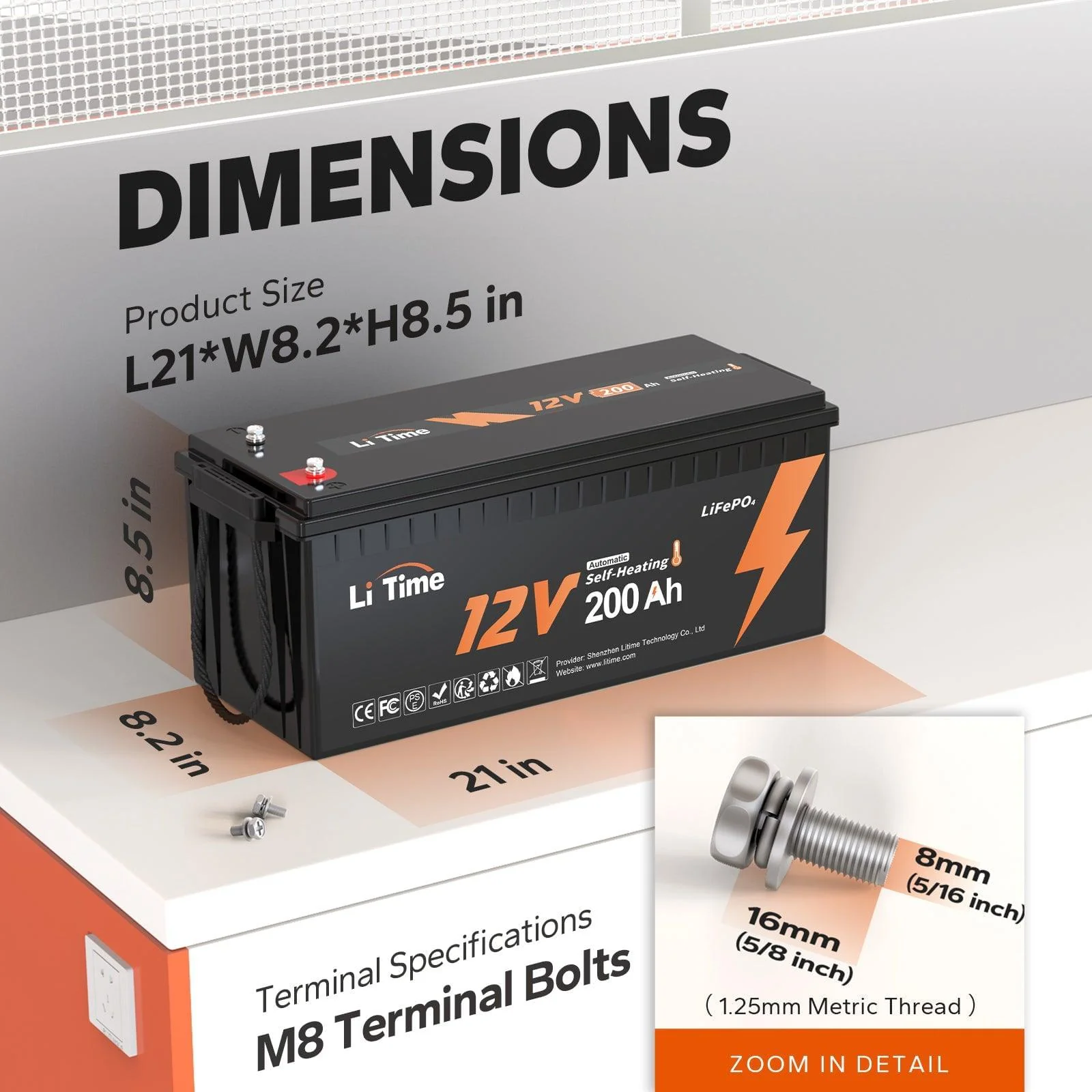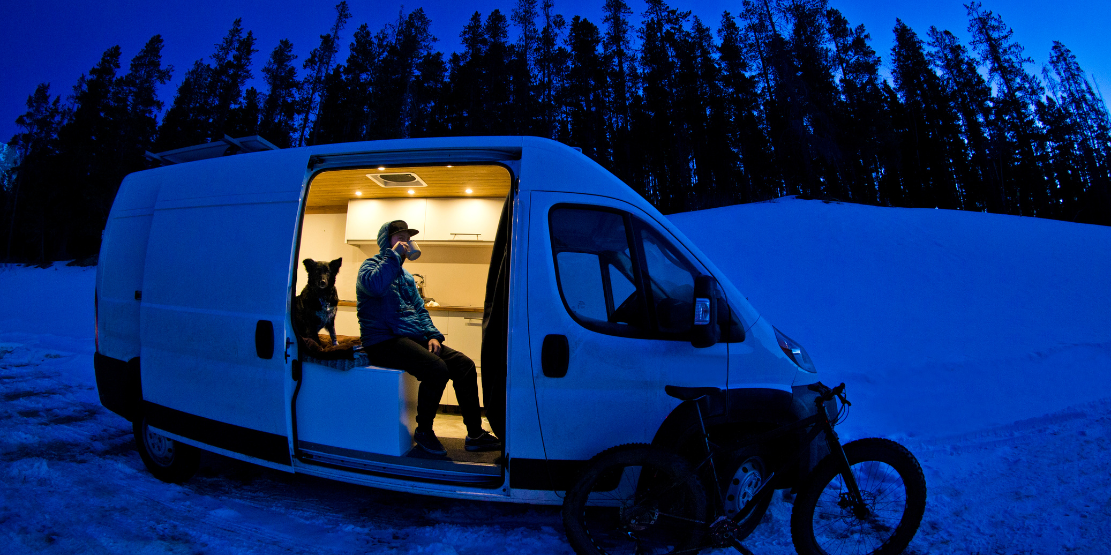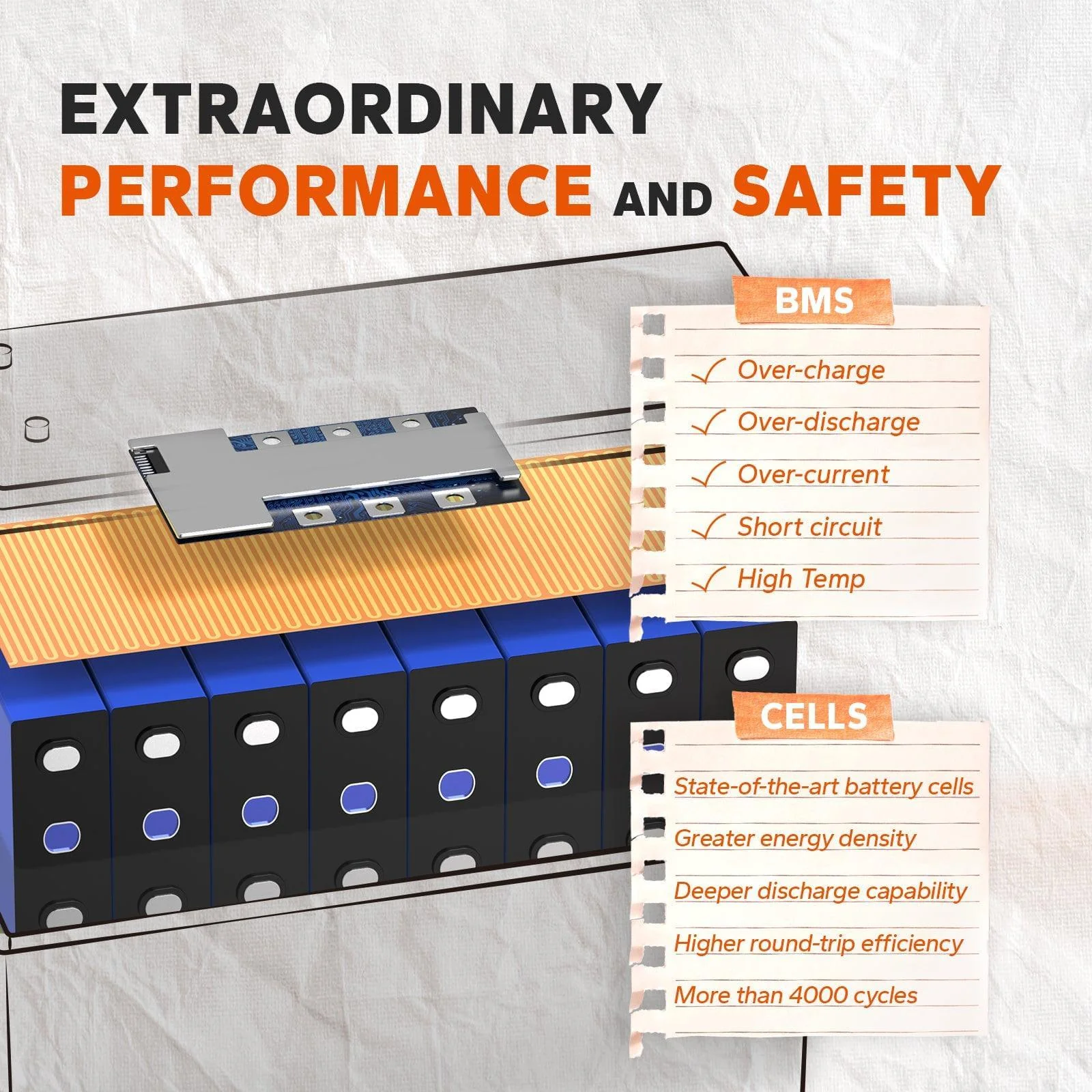
I RECENTLY UPGRADED MY SYSTEM after finding I had plenty of solar but not a big enough battery bank. I had a 200Ah battery bank and if I had no sun coming in, my batteries died after three or four days. This was insufficient holding power to get me through for an extended period.
When considering what to do next, I knew I was only going to buy LiFePO4 batteries. Their price has decreased, and the technology is now competitive with all other battery options. The LiFePO4 rechargeable battery technology is superior in nearly all ways.
I started to search and ultimately decided on the Ampere Time (rebranded to Litime) batteries. I felt they would be a good quality product at a low price. Other brands you may want to consider likely have good quality at a lower price, but here is why I chose this one.
200Ah Battery
I chose a 200Ah battery because of the form factor. Depending on your rig configuration, two of the 100Ah may be a better fit. I like the idea of one big battery and just two terminals. This way, I don’t have a lot of terminals and connections that can get corroded and eventually be a problem for me. They also make a 300Ah and 400Ah battery.
This 200Ah battery is only 44 pounds and lighter than one 100Ah lead-acid battery. LiFePO4 batteries are 1/3 the weight of lead-acid batteries. I can easily handle this one myself. Once you get into the 300 and 400Ah sizes, they are heavier and much more bulky to move.



Automatic Self-Heating
This battery has Automatic Self-Heating which is the main reason I chose it. Why would I care so much about this feature?
Lithium batteries cannot be charged in temperatures below freezing. I don’t mean it’s just not a good idea. They must not be. If charged below freezing, they will be irrevocably damaged and virtually destroyed. They can safely charge between 32°F to 113°F (0°C to 45°C). You do not want to risk them ever being charged when it’s below freezing.
I try hard to avoid being where it’s that cold, but it can happen. Then, it doesn’t matter how much solar you have because you can’t use it for charging. You can only use and discharge lithium batteries in freezing temperatures.

Almost all batteries come with a high-temperature cut-off function. If it gets too hot, the built-in Battery Management System (BMS) will prevent charging over 122 °F (50 °C).
They don’t all have a low-temperature cut-off, though. In fact, most cheap lithium batteries do not have low-temperature protection. Batteries with low-temperature charging protection will automatically cut the battery charging off when the cell temperature is lower than 32°F, preventing the battery cells from damage when charging under the freezing point.
The self-heating function has sensors that detect the battery temperature. The BMS will heat the battery through the heating pads once the charging temperature drops below 41°F (5°C). The heating will be stopped when the temperature has reached 50°F (10°C), and then the battery will be charged normally.
You will pay more for the low-temperature cut-off or automatic self-heating function with heating pads. I bought this one for the self-heating technology that will allow me to continue charging my batteries even in cold environments.

Mix of Old and New
The significant advantage of lithium over lead-acid batteries is in the ability to use different aged batteries. You can add a new lithium battery to an older battery and expand your system. The BMS reads the power and sorts it for each battery, not the entire system. This means you are not tied to buying all your batteries at the same time and can expand your battery bank at any time with no cost or loss to you in capacity. If you have AGMs, the new battery will never be more full than the old one. That’s a considerable disadvantage.

Battery Lifespan
Another great reason to buy any LiFePO4 is the battery cycles. You will get more battery cycles out of any lithium than you will an AGM. This battery is advertised as 4,000+ cycles if discharged by 80%. If you drain the battery by 80% every time, it can do that 4,000 times. That’s a huge number! If you only take it down by 40%, leaving it 60% full, it can get 15,000 cycles.
The cycle life is affected by the battery capacity used during a discharge. Because I will have a huge battery bank now, my battery will never be more than shallow cycling (recharging at only 20-30% of the battery capacity). That means I can get 15,000 cycles out of this. That’s easily ten years or more! This as opposed to just 1,000 cycles that most lead-acid or golf cart batteries offer. A good quality golf cart battery will also cost you more than this one.

Conclusion
We’re to the point now that buying lead-acid batteries no longer makes economic sense. Again, a big problem is still that cold. The lead-acid can get cold and continue to charge. The lithium in freezing temperatures will be destroyed. So, there is no comparison with the disadvantages. The self-heating feature in these batteries solves that for me, and I’m glad I did it.
I hope this helps you to understand my thinking when I bought the Ampere Time Automatic Self-Heating battery. I love the form factor for the battery size and found the company to have a good reputation. I did spend a little more, and I think it is worth the price for what I’m getting.
What are your wants, needs, or considerations regarding batteries? Share your opinions in the comments.

One thing to be aware of with Lithium batteries is that they can’t take high temperatures as well as AGM. The Lithiums I’ve looked at are limited to 113F, where the AGMs are rated to 140F.
If you are living out there full time this isn’t as much of an issue as 113 is higher than you will ever want to be living in. However if you have a trailer and have to cross the desert while in your air conditioned car / truck you could fry your batteries. I did that last summer with an LFP battery in a power station. That was an expensive learning experience.
I do not full time, so my trailer will be parked some of the time in summer in southern Arizona. That requires that I stick with AGM batteries.
I also bought one of those 200Ah, self-heating AmperTime/LiTime batteries. So far so good.
Exploring CheapRVliving.com was enlightening! Comprehensive resources, budget-friendly tips, and a supportive community make it an invaluable hub for those seeking a frugal and fulfilling life on the road. Highly recommended!